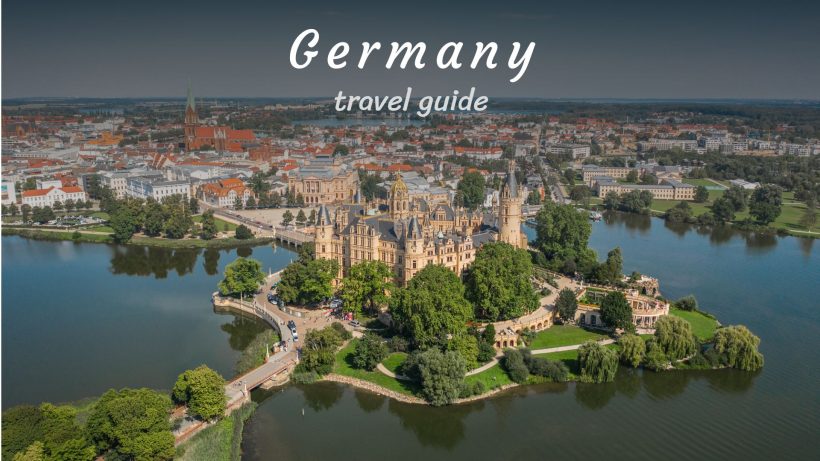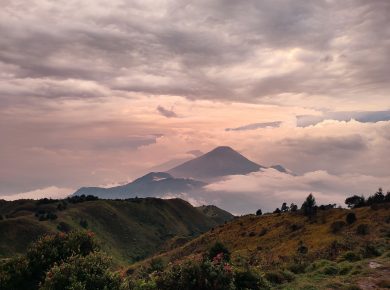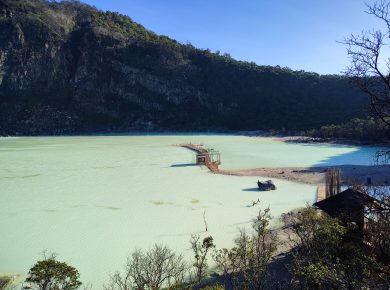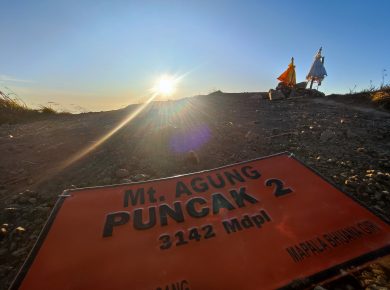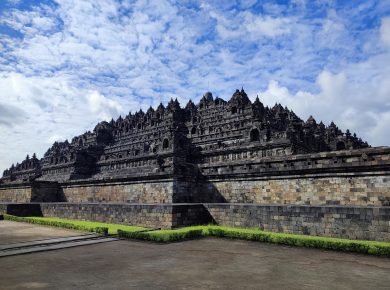Germany is a country of contrasts, as are all, therefore, with charming and incredible places, along with terrible times and other aspects not so pleasant as its climate. Germany, like the rest of the world, is worth a visit, to really get to know it, over and above the clichés with which we often reduce the geographies to which we are not accustomed.
In Europe, Germany is much less well known than France, Italy, Portugal, or Greece, which reduces it to not very accurate clichés. These false ideas are what we will try to change, to encourage you to visit this very close and important country, which has so much to see and enjoy.
Contents
Geographic
Germany is not a huge country, but a diverse one. The north (Schleswig-Holstein, Lower Saxony, and the lander states of Bremen and Hamburg) is Baltic and Frisian, with its islands and lively beaches in summer; its plains full of lakes, rivers, and canals. South Bavarian and industrial, (Baden-Württemberg, Bavaria, Hesse) the southern Alps, almost Swiss and Tyrolean with the Black Forest and vineyards that sometimes resemble Tuscany.

To the west the Rhine Germany to the west (North Rhine-Westphalia, Rhineland-Palatinate and Saarland), with the Rhine as a shared axis with France, Belgium, Luxembourg, and Holland, with its castles, old mines, and cities.
Then turning north we find the other south, the Metallic Mountains. There Germany is also a border with Poland and the Czech Republic. Central Germany of Mitteleuropa of plains, cities and towns, fields of crops, factories, and majestic cities of Thuringia, Saxony and Saxony-Anhalt and Mecklenburg-Western Pomerania. Former East Germany has regained its splendor and the best example is the capital of Berlin.
This variety of climates, reliefs, and geographies is expressed in its nature, cities, and monuments, a reflection of a stormy history as it is proper to the old continent.
Nature diamonds
Water could be the fundamental element to understanding Germany, which is a paradox since it is a country considered eminently continental. It is true since Germany is located in the center of Europe, but it is also open to the sea by the north and by the Rhine, which connects the center of Europe with the Atlantic. Rivers and canals are waterways that connect the land, mostly flat but rising on the country’s edges.
The German Alps and the Metallic Mountains hide dreamy landscapes that could take us back to the past of a Europe that no longer exists in the rest of the country. Visit these places when the autumn dawns the leaves and dyes of red, yellow, and oranges some landscapes that could be those of Canada or Siberia. In winter, snow covers the landscape, freezes the lakes, and transforms the panoramas.

And then spring greens and gives life to the plains and lands that come back to life with flowers and crops. The whole center of the country may seem less interesting and apparently homogeneous, but ignorance makes any lake, river or natural monument surprise us and make the journey an adventure. Moreover, where the mountains are missing, there are historical cities full of monuments, culture and gastronomy to discover.
The north sea coast has a necklace of islands that reach as far as Holland, with landscapes in Friesland that are surprised by their flat and rough character, where the wind dominates. The Baltic coast is different, sandy, and full of beaches and spas. The climate is not that of the Mediterranean, but the attitude often is.
Country of history and culture
In addition to being the largest Central European country in terms of population and size, Germany is the most important economy in Europe and the largest exporting country in the world. Germany is a federal country with a highly decentralized and urbanized structure. The capital, Berlin, does not dominate the rest of the country as does London in the UK or Paris in France.
However, it has been considered one of the world’s great cities and has been in fashion since the 1990s. Berlin has world-famous monuments such as the Brandenburg Gate, the Pergamon Museum, Alexander Platz or its parliament.

The undisputed financial capital of Germany is Frankfurt am Main (not to be confused with Frankfurt on the Oder). It has an unusual profile in Central Europe, with high buildings and a growing airport. This is why certain media have renamed it “Mainhattan”. Despite this, the center was rebuilt after the Second World War and its small wooden buildings contrast with its skyline.
Munich is another of Germany’s capitals, an industrial and financial center, a German city where there are, but which always claims its Bavarian peculiarity
Hamburg is the main port and the vanguard of new urban projects
Bremen, Düsseldorf, Hanover, Cologne, Dresden, Stuttgart, and Dortmund are other major cities. But there are also smaller and very interesting cities Nuremberg, Aachen, Regensburg, Tübingen, Bonn, Lübeck or Ingolstadt, which stand out for their bus monuments or their universities.
The industry is the benchmark of a country that bases Germany’s image on quality and production. Cars are a symbol of national pride, and manufacturers such as Audi, BMW, Mercedes, Porsche, and Volkswagen are famous internationally for their quality, safety, and style. Germany’s excellent road network is complemented by a high-speed train system, the ICE, which makes communications and transportation very easy.
The most relevant event in its recent history has been the reunification into a single state of East and West Germany, symbolized by the fall of the Berlin Wall. The recent past still has its footprint in Germany.

The two World Wars and the Nazi dictatorship that destroyed the country and caused so much pain and destruction have served to make a much-needed self-criticism. A visit to the monuments in connection with the two World Wars, ruins, Berlin’s subterranean (unterwelten) concentration camps, makes it possible not to forget events, which must never be repeated.
Together with France, Germany is one of the motors of the European Union and the strengthening of the Franco-German axis has marked normalization and reconciliation in Europe. Unfortunately, in recent years, like all the countries of Europe, more unilateral and less consensual decisions have been taken, endangering European unity.
Gastronomy and Festivals in Germany
A priori we think that Germany is the country of beer par excellence and we imagine those great, ridiculous gentlemen emptying jugs of Olympic dimensions. But it is not so clear that Germany is a country of beer or at least as much as a country of wine. Germany exports wine all over the world and has magnificent valleys covered with vines.
Germany’s beer culture, for example, centers around the largest city in the south, Munich, where beer is traditionally served in liter jugs. Munich is also home to the Oktoberfest, the largest and most visited beer festival in Europe and the world.

However, the western German regions are known for their wine and wine-growing areas (e.g. Rheinland-Pfalz and Hesse). Bad Duerkheim on the “German Wine Route” organizes the largest wine festival in the world with more than 600,000 visitors a year.
Conclusion thoughts
Like any great country to which we intend to travel, Germany offers us an endless variety of records for our journey: culture, great cosmopolitan cities, natural spaces, gastronomy, party and animation, art and innovation.
The most common way to get to know Germany is usually to visit Berlin and, depending on the time we have to make some route starting from there. Another very common option is to base ourselves on several getaways to the most important cities: Munich, and Frankfurt… and try to get to know the region from its area of influence. Be that as it may, getting to know Germany is a great experience, an opportunity, and one of the trips we can’t miss.

Germany is a cultural and gastronomic destination, but also a Naturaleza destination, with its natural beauties taken care of and protected. The exploration of this country and all its facets offers us weeks of visits and interesting activities.
Berlin, cool, multicultural, and full of life, is a magnificent capital in a constant state of reinvention. At the other extreme, Munich climbs over Bavaria, the center of national traditions. The villages and their castles, slopes, and ski resorts are nearby. Cities of all sizes compete to be the European techno mecca.
Enjoy the outdoors, mountains, skiing, and excursions through carefully preserved forests. Ancient traditions from the East, beautiful Dresden, prosperous Cologne, innovative Hamburg, Bonn or Freiburg, Aachen, the Bavarian Black Forest, the palaces of Sanssouci or Charlottenburg or the fairytale castles of Hohenzollern and Neuschwanstein are waiting to be discovered.
